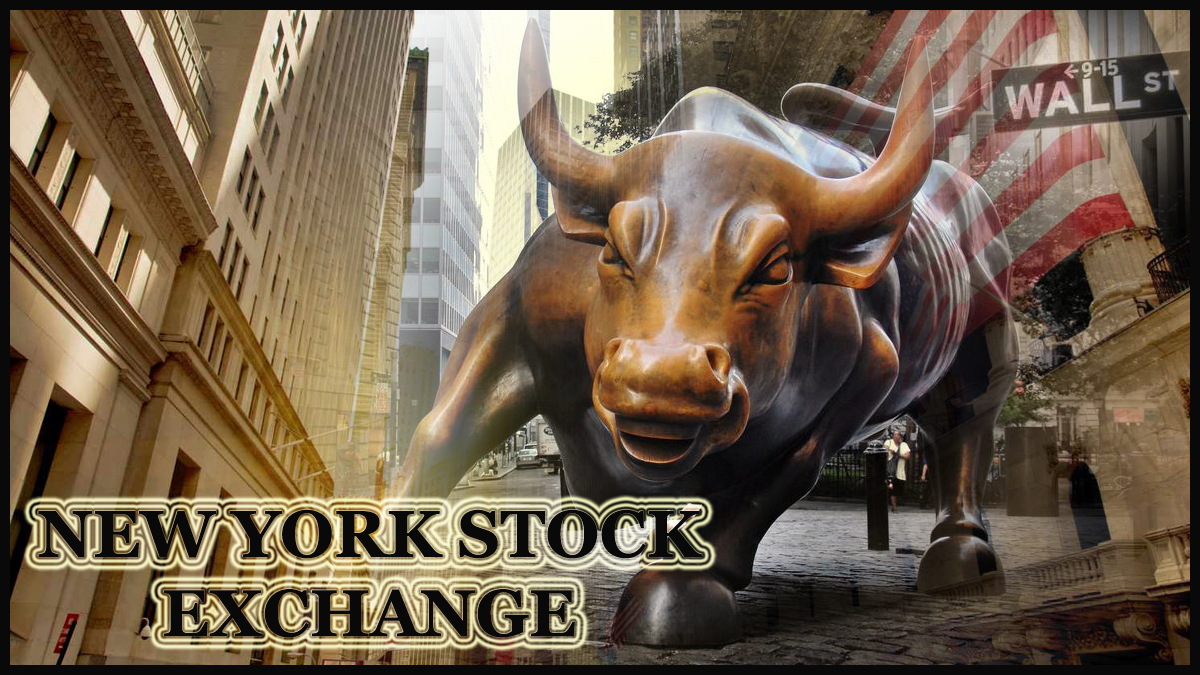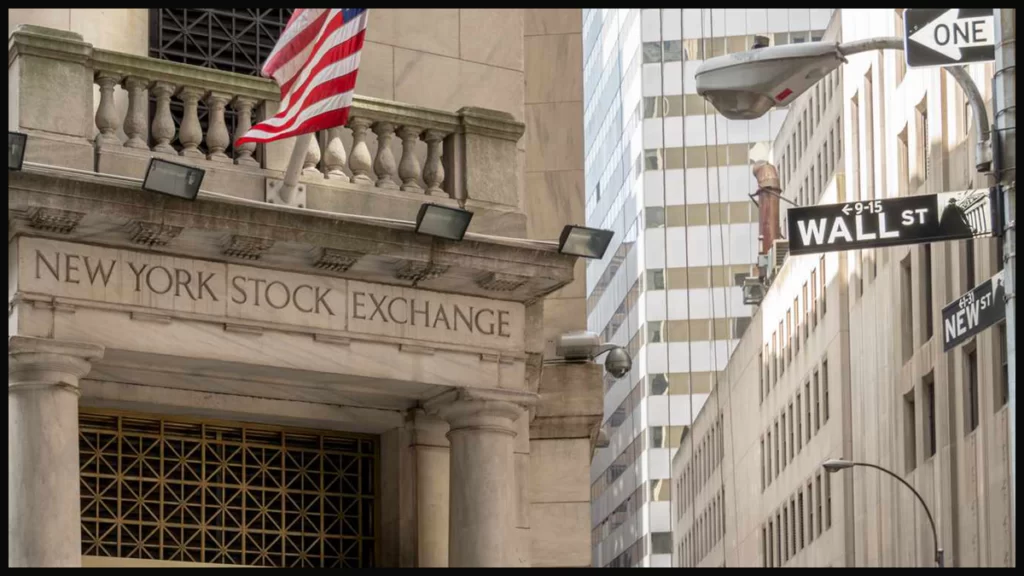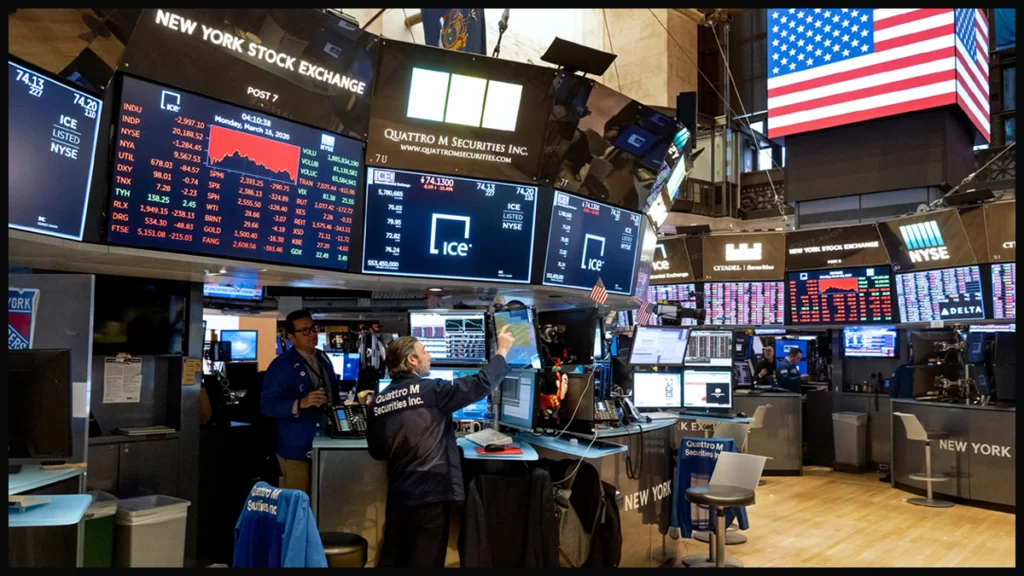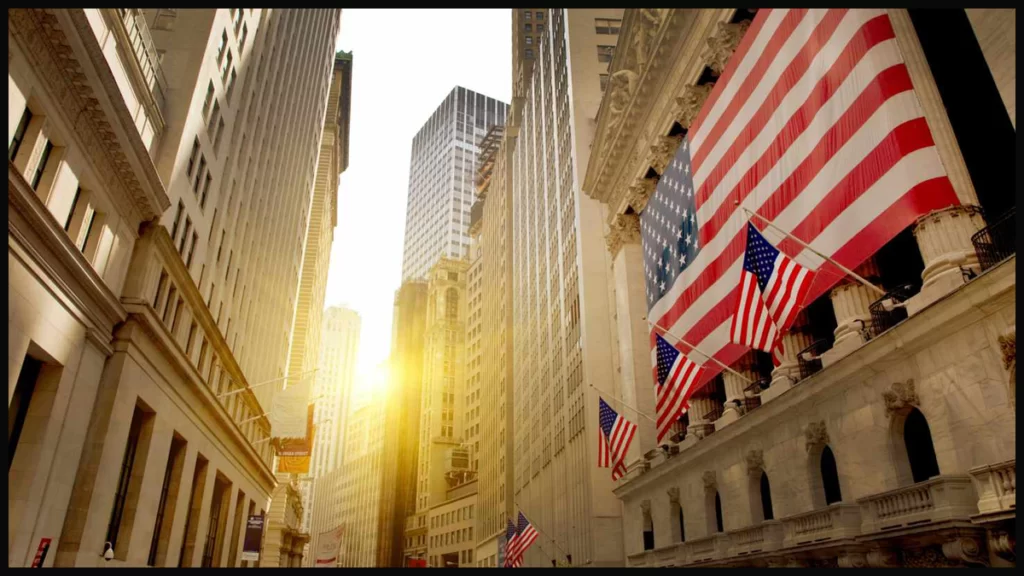
The New York Stock Exchange (NYSE) is one of the largest and oldest stock exchanges in the world. It was founded in 1792 and is located in the Financial District of Manhattan in New York City. The NYSE is owned by Intercontinental Exchange (ICE). And operates as a traditional auction-style exchange where buyers and sellers physically trade stocks on the floor of the exchange.
The NYSE is home to some of the world’s largest and most well-known companies, including Coca-Cola, IBM, McDonald’s, and Walmart. It is also the primary listing exchange for many international companies. In total, the NYSE has over 2,400 listed companies with a combined market capitalization of over $30 trillion.

The NYSE operates from Monday through Friday, with trading hours from 9:30 am to 4:00 pm Eastern Time. It is closed on certain holidays, such as Christmas Day and Thanksgiving Day.
The NYSE has a set of rules and regulations that companies must follow in order to be listed on the exchange. Companies must meet certain financial requirements and maintain good corporate governance practices. The NYSE also has a regulatory arm called the Securities and Exchange Commission (SEC). Also which oversees the trading activity on the exchange to ensure fair and orderly markets.
While the NYSE is known for its traditional auction-style trading, it also operates an electronic trading platform called NYSE Arca. This platform allows for electronic trading of stocks and other securities outside of regular trading hours.
Overall, the NYSE is an important institution in the global financial system. And plays a critical role in facilitating the trading of stocks and other securities.
Here are some additional facts and information about the New York Stock Exchange (NYSE):

Market Indices: The NYSE operates several market indices, including the Dow Jones Industrial Average (DJIA). And which is one of the most widely followed stock market indices in the world. The DJIA is composed of 30 large-cap American companies. And is used as a barometer for the overall health of the US stock market.
Market Data: The NYSE provides real-time market data and other financial information through its website and various data vendors. This information includes stock quotes, market news, and other data points that are important for investors and traders.
Trading Floor: While the NYSE has moved to electronic trading for most of its activity. The exchange still maintains a physical trading floor where specialists and floor brokers execute trades for clients. This iconic trading floor, with its distinctive blue and white trading jackets. Also has been featured in numerous movies and television shows.
Trading Process
Trading Process: The NYSE uses a hybrid trading system that combines electronic trading and traditional auction-style trading. Orders are executed through a computerized system called the NYSE Integrated Trading System (ITS). But floor brokers and specialists can also execute trades manually on the trading floor.
Governance: The NYSE is governed by a board of directors that is responsible for overseeing the exchange’s operations and setting policy. The board is composed of both independent directors and representatives from the exchange’s member firms.
Regulation: The NYSE is subject to regulation by the US Securities and Exchange Commission (SEC). And which is responsible for ensuring that the exchange operates fairly and transparently. The SEC oversees the NYSE’s compliance with securities laws and regulations and can take enforcement action if necessary.
Mergers and Acquisitions
Mergers and Acquisitions: The NYSE has undergone several mergers and acquisitions over its long history. In 2007, it was acquired by the Intercontinental Exchange (ICE), a global exchange operator. This acquisition has allowed the NYSE to expand its global reach and diversify its business beyond traditional stock trading.
Here are some additional facts and information about the New York Stock Exchange (NYSE):

Listing Requirements: To be listed on the NYSE, companies must meet certain listing requirements. Also such as having a minimum market capitalization and meeting financial and governance standards. Companies that meet these requirements are considered “listed” and their shares can be traded on the exchange.
Trading Volume
Trading Volume: The NYSE is one of the largest stock exchanges in the world in terms of trading volume. On an average trading day, millions of shares are also traded on the exchange. With a total value of billions of dollars.
Opening and Closing Bells: The NYSE is famous for its opening and closing bells. And which signal the start and end of each trading day. These bells are rung by special guests, such as celebrities or company executives, and are often broadcast on television and other media.
Market Capitalization: The NYSE is home to some of the world’s largest and also most valuable companies. And with a combined market capitalization of over $30 trillion. This makes it a critical player in the global financial system. And an important indicator of the health of the US economy.
Market Volatility: Like all stock exchanges, the NYSE is subject to market volatility and fluctuations in stock prices. This can be caused by a variety of factors, such as economic conditions, political events, or changes in investor sentiment.
Corporate Governance: The NYSE places a strong emphasis on corporate governance. And requires listed companies to meet high standards of transparency and accountability. This includes regular financial reporting and disclosure, as well as adherence to ethical and legal standards.
Investor Protection: The NYSE is committed to protecting the interests of investors and maintaining fair and orderly markets. It has a number of safeguards in place, such as circuit breakers that can halt trading in the event of extreme market volatility. And a regulatory system that enforces compliance with securities laws and regulations.
History of NYSE
The New York Stock Exchange (NYSE) has a long and storied history dating back over 200 years. Here are some key events in the exchange’s history:
Founding: The NYSE was founded on May 17, 1792. And when a group of 24 stockbrokers signed the Buttonwood Agreement under a buttonwood tree on Wall Street. This agreement established the framework for organized trading of securities in the United States.
Early Years: In its early years, the NYSE was a small and informal exchange that traded mainly government bonds and bank stocks. However, it gradually grew in size and importance as the American economy expanded.
First Listed Companies
First Listed Companies: The NYSE’s first listed companies were mostly banks and insurance companies. But over time it began to attract a wider range of firms, including railroads, steel companies, and other industrial giants.
Expansion and Modernization: In the late 19th and early 20th centuries,. And the NYSE underwent a period of rapid expansion and modernization. It also adopted new technologies like the telegraph and telephone to facilitate trading. And also established a formal regulatory framework to ensure fair and transparent markets.
Black Tuesday: On October 29, 1929, the NYSE experienced one of its worst days in history. Also with the stock market crashing and triggering the onset of the Great Depression. This event led to a wave of reforms and regulations aimed at preventing future financial crises.
Electronic Trading: In the 1970s and 1980s. The NYSE began to transition from its traditional auction-style trading to electronic trading systems. This also allowed for faster and more efficient trading, and paved the way for the development of online trading platforms.
Mergers and Acquisitions: In the 21st century. The NYSE has undergone several mergers and acquisitions that have reshaped the exchange’s operations and business model. In 2007, it was acquired by the Intercontinental Exchange (ICE). A global exchange operator, and has since expanded its reach and diversified its offerings.
Today, the NYSE remains one of the world’s most important financial institutions. Also playing a critical role in the global economy and serving as a symbol of American capitalism and innovation.
Companies Listed in NYSE
The New York Stock Exchange (NYSE) is home to some of the largest and most well-known companies in the world. Here are some examples of companies that are currently listed on the NYSE:
- Apple Inc. (AAPL)
- Amazon.com, Inc. (AMZN)
- Coca-Cola Company (KO)
- ExxonMobil Corporation (XOM)
- General Electric Company (GE)
- Johnson & Johnson (JNJ)
- JPMorgan Chase & Co. (JPM)
- Microsoft Corporation (MSFT)
- Procter & Gamble Company (PG)
- Visa Inc. (V)
These are just a few examples of the many companies that are listed on the NYSE. In addition to these large, multinational corporations. The exchange also hosts many smaller and mid-sized firms. And as well as a variety of exchange-traded funds (ETFs) and other financial products. The NYSE is a critical component of the global financial system. Also providing investors with access to a wide range of investment opportunities and helping to drive economic growth and development.
Also Read – Improve PC Health 20Tricks
Founder and Owners of NYSE
The New York Stock Exchange (NYSE) was founded in 1792 by a group of stockbrokers. Who signed the Buttonwood Agreement under a buttonwood tree on Wall Street. The exchange was initially known as the New York Stock and Exchange Board and operated as a member-owned organization.
Over time, the ownership structure of the NYSE has changed as the exchange has undergone various mergers and acquisitions. Here is an overview of the major owners of the NYSE throughout its history:
Founding Members: The NYSE was originally owned by its founding members, who were also a group of stockbrokers and merchants. These individuals held shares in the exchange and had a say in its governance and operations.
Also Read – SouthKorean Legal Disputes with Japan
NYSE Publicly Traded: In 2006, the NYSE went public and became a publicly traded company. Its shares were listed on the exchange under the ticker symbol NYX.
Acquisition by Intercontinental Exchange (ICE): In 2013, the NYSE was acquired by the Intercontinental Exchange (ICE). A global exchange operator based in Atlanta, Georgia. As part of the deal, the NYSE also became a subsidiary of ICE, and its shares were also delisted from the exchange.
Today, the NYSE is owned by ICE, which operates a range of exchanges and trading platforms around the world. The exchange also operates as a regulated marketplace for buying and selling securities. And its operations are also overseen by various regulatory bodies and industry organizations.
Also Read – H3N2: Information about the H3N2 flu spike

2 thoughts on “All about New York Stock Exchange”